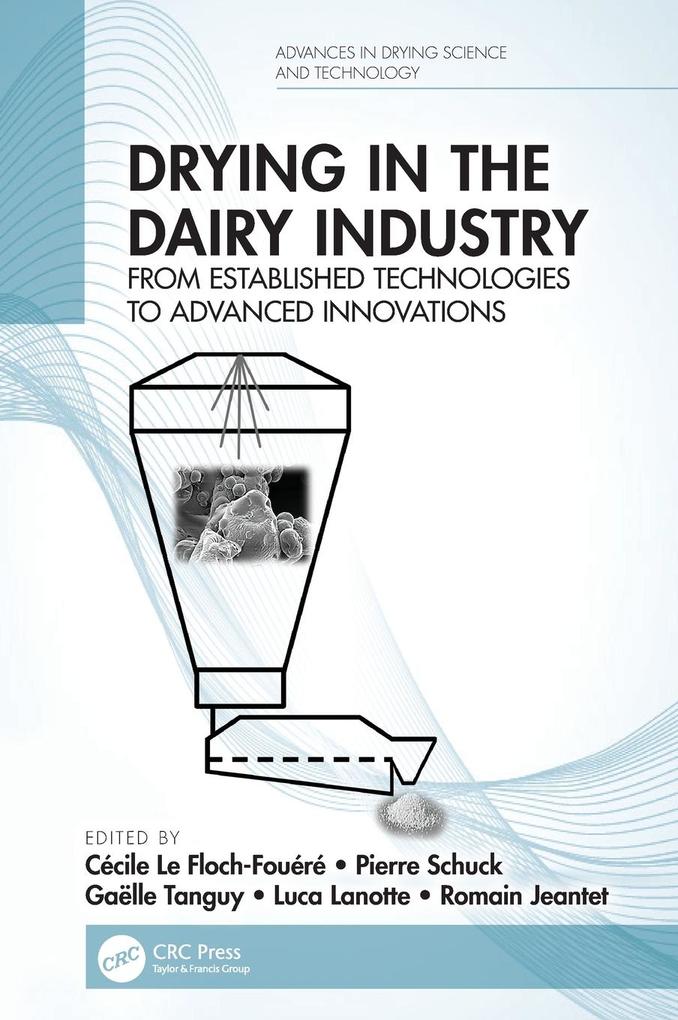
Zustellung: Mi, 27.08. - Sa, 30.08.
Versand in 7 Tagen
VersandkostenfreiBestellen & in Filiale abholen:
With more than 12M tons of dairy powders produced each year globally the drying sector accounts to a large extent for the processing of milk and whey. This book is a synthetic and complete reference work for researchers in academia and industry exploring innovations in drying in the dairy industry.
Inhaltsverzeichnis
Preface ,1. Spray-Dried dairy products categories, 1.1. Introduction, 1.2. The fundamentals of spray drying process in the production of dairy products, 1.3. Spray-dried dairy powder products, 1.4. Conclusion; 2. Technology, modelling and control of the processing steps, 2.1. Improvement of whey products spray-drying by use of membranes processes, 2.2. Concentration by vacuum evaporation, 2.3. Lactose crystallization for whey, permeate and lactose, 2.4. Homogenization: a key mechanical process in interaction with product to modulate the organization of fat in spray-dried powders, 2.5. Technology, Modelling and Control of the Processing Steps in Spray Drying, 2.6. Agglomeration processes of dairy powders, 2.7. Product Modification in Fluidized Bed Dryer; 3. Powder properties and influencing factors, 3.1. Glass transition and Water activity, 3.2. Caking of dairy powders, 3.3. Whey proteins pre-texturized by heating in dry state, 3.4. Physical properties of spray-dried dairy powders in relation with their flowability and rehydration capacity, 3.5. The microbiology of milk powder processing; 4. Innovations & Prospects, 4.1. Infant and follow-on formulae, 4.2. Lactose Hydrolyzed Milk Powder, 4.3. Properties of non-bovine functional camel milk powder, 4.4. How producing dairy powders without the use of drying chamber?, 4.5. Prediction of spray drying parameters: SD2P® software, 4.6. Spray drying of probiotics: towards a controlled and efficient process; 5. Conclusion - The drying of milk at the laboratory scale: from the industrial need to the scientific challenge, 5.1. Limitations of the drying process at the industrial scale, 5.2. Laboratory investigation of the evaporation in dairy systems, 5.3 Microscopy and microfluidic opportunities for studying the drying of dairy protein droplets
Produktdetails
Erscheinungsdatum
26. November 2020
Sprache
englisch
Untertitel
From Established Technologies to Advanced Innovations.
Sprache: Englisch.
Seitenanzahl
298
Herausgegeben von
Cécile Le Floch-Fouéré, Pierre Schuck, Gaëlle Tanguy
Verlag/Hersteller
Produktart
gebunden
Gewicht
759 g
Größe (L/B/H)
260/183/21 mm
ISBN
9780815359982
Entdecken Sie mehr
Bewertungen
0 Bewertungen
Es wurden noch keine Bewertungen abgegeben. Schreiben Sie die erste Bewertung zu "Drying in the Dairy Industry" und helfen Sie damit anderen bei der Kaufentscheidung.










